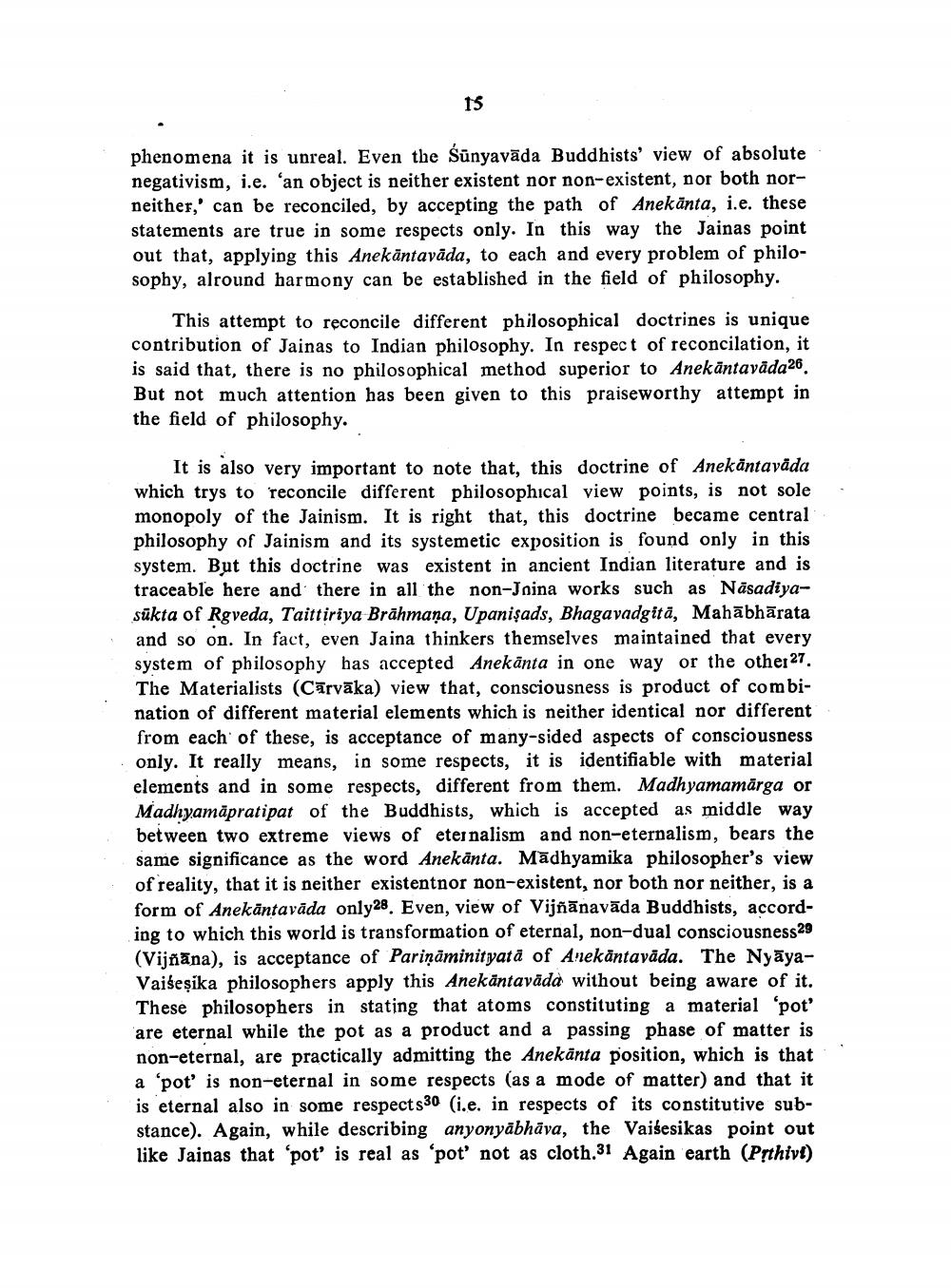________________
15
phenomena it is unreal. Even the Sünyavada Buddhists' view of absolute negativism, i.c. 'an object is neither existent nor non-existent, nor both norneither, can be reconciled, by accepting the path of Anekanta, i.e. these statements are true in some respects only. In this way the Jainas point out that, applying this Anekantaväda, to each and every problem of philosophy, alround harmony can be established in the field of philosophy.
This attempt to reconcile different philosophical doctrines is unique contribution of Jainas to Indian philosophy. In respect of reconcilation, it is said that, there is no philosophical method superior to Anekantavāda But not much attention has been given to this praiseworthy attempt in the field of philosophy.
It is also very important to note that, this doctrine of Anekantavāda which trys to reconcile different philosophical view points, is not sole monopoly of the Jainism. It is right that, this doctrine became central philosophy of Jainism and its systemetic exposition is found only in this system. But this doctrine was existent in ancient Indian literature and is traceable here and there in all the non-Jnina works such as Näsadiyasūkta of Rgveda, Taittiriya Brahmaṇa, Upanisads, Bhagavadgita, Mahabharata and so on. In fact, even Jaina thinkers themselves maintained that every system of philosophy has accepted Anekanta in one way or the other 27, The Materialists (Carväka) view that, consciousness is product of combination of different material elements which is neither identical nor different from each of these, is acceptance of many-sided aspects of consciousness only. It really means, in some respects, it is identifiable with material elements and in some respects, different from them. Madhyamamarga or Madhyamapratipat of the Buddhists, which is accepted as middle way between two extreme views of eternalism and non-eternalism, bears the same significance as the word Anekanta. Madhyamika philosopher's view of reality, that it is neither existentnor non-existent, nor both nor neither, is a form of Anekantavada only. Even, view of Vijñānavāda Buddhists, according to which this world is transformation of eternal, non-dual consciousness (Vijnana), is acceptance of Pariņāminityata of Anekantavada. The NyayaVaišeṣika philosophers apply this Anekantavada without being aware of it. These philosophers in stating that atoms constituting a material 'pot' are eternal while the pot as a product and a passing phase of matter is non-eternal, are practically admitting the Anekanta position, which is that a 'pot' is non-eternal in some respects (as a mode of matter) and that it is eternal also in some respects30 (i.e. in respects of its constitutive substance). Again, while describing anyonyabhava, the Vaiśesikas point out like Jainas that 'pot' is real as 'pot' not as cloth.31 Again earth (Prthivi)




